Section C: Riffles, Pools & Point Bars
SECTION C: NUMBER OF RIFFLES, POOLS AND POINT BARS

For analytical purposes, the numbers of riffles, pools, unvegetated and vegetated point bars need to be recorded. This is best done as a cumulative tally between spot-checks. Always give the actual numbers, including zero. The tally can be recorded alongside the boxes, or at the top or bottom of page 2, and at the end of the survey the total number is transferred to the relevant boxes in Section C.
Riffle(s)
Habitat feature characterised by:
- shallow, fast-flowing, water with a distinctly disturbed surface over unconsolidated gravel-pebble, or cobble, substrate.
- a predominant flow type of ‘Unbroken standing waves’ . This does not include unbroken standing waves associated with bedrock or solid peat/clay substrates.
Riffles recorded in Section C must:
- occupy most of the wetted channel width.
- be no longer than five times the river width.
Riffles create a distinct ‘bubbling’ sound.
Continuous ‘unbroken standing wave’ flow-type does not constitute discrete riffles. To be recorded as discrete individual features, a contrasting flow-type must separate each riffle. As a rough guide, riffles naturally occur at intervals equivalent to 5-10 times the channel bankfull width.
In well-vegetated streams, aquatic vegetation sometimes creates unbroken standing waves by constricting or obstructing flow, or cause fine sediment deposition that raises the riverbed. Do not record such examples as riffles.
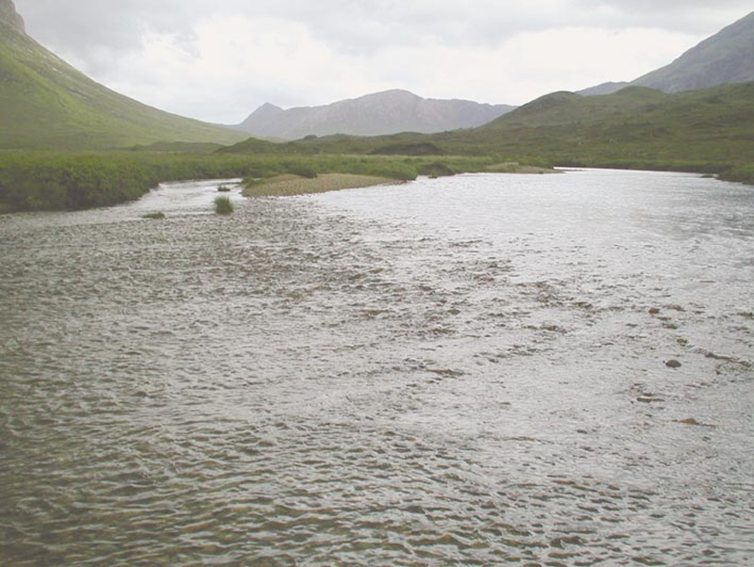
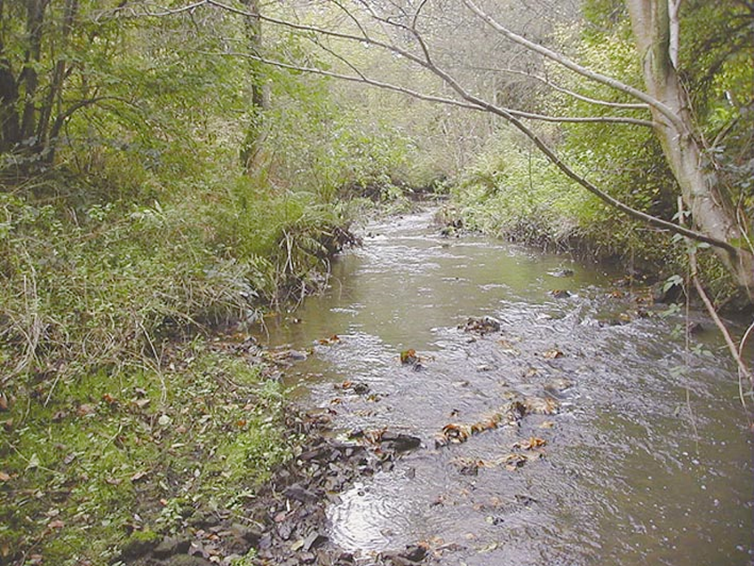
Examples of Riffles
Pool(s)
Habitat features characterised by distinctly deeper parts of the channel that are usually no longer than one to three times the channel’s bankfull width and where the hollowed river bed profiles are sustained by scouring.
Typical locations for pools include:
- the outside of tight meanders.
- downstream from natural bedrock outcrops (e.g. downstream from waterfalls or chutes where ‘plunge pools’ are formed).
- below some weirs, where both downward and lateral erosion creates a typical scour pool.
Due to their self-scouring nature, associated flow-types can vary across the pool, and include upwelling, and even no perceptible flow when there is circulating current.
Deep water impounded upstream of natural (bedrock), or artificial (weir) obstructions does NOT constitute a pool.
Even where the river bed is visible, pools are difficult to identify with absolute certainty. Do not spend time agonising over detail, but be consistent in your assessment. If in doubt, take photographs and seek advice for future surveys.
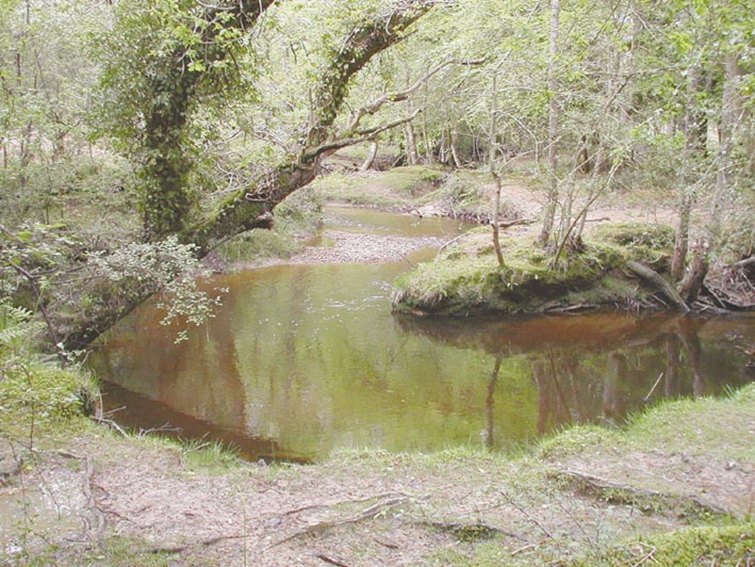
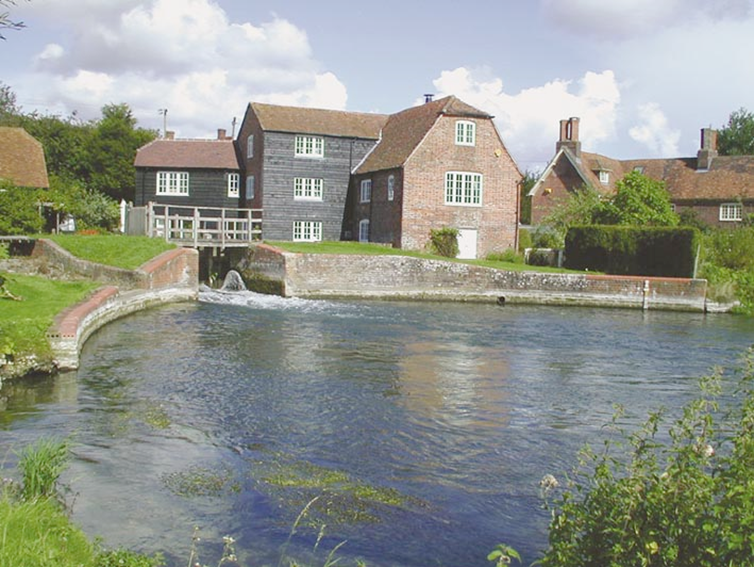
Examples of Pools in a River
Unvegetated point bar(s) (PB)
A distinctive depositional feature that is:
- composed of unconsolidated river bed material.
- exposed at low flow, usually with a shallow slope into the water.
- characteristically located on the inside of tight meanders in actively eroding/depositing rivers.
- classified as ‘unvegetated’ if <50% of the surface area has plant cover.
Constituent material of point bars is primarily sediment that has been transported from upstream; it is generally not derived locally. This contrasts with slumped banks recorded in Section I.


Example of Unvegetated Point Bars
Vegetated point bar(s) (VP)
A distinctive depositional feature that is:
- composed of consolidating river bed material.
- exposed at low flow, usually with a shallow slope into the water.
- characteristically located on the inside of distinct meander bends, usually on rivers that are less active than where ‘unvegetated’ bars are found.
- classified as ‘vegetated’ if >50% of surface area has plant cover, often showing a successional sequence from bare shingle to even some scrub.
Constituent material as for unvegetated point bars. Moss cover on bars is included as part of the vegetation cover, as this indicates stability.
In certain circumstances a sequence from unvegetated to vegetated bars may progress further, so that over time they may become ‘natural berms’ (see E; Marginal and Bank Features).
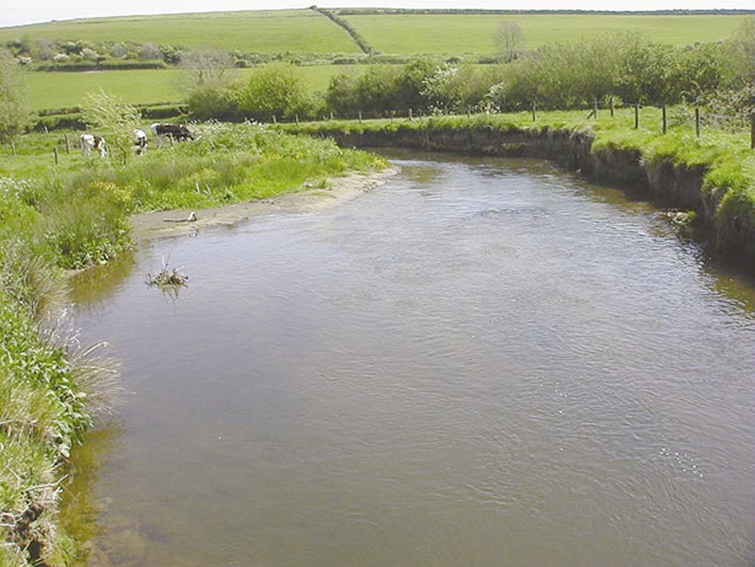
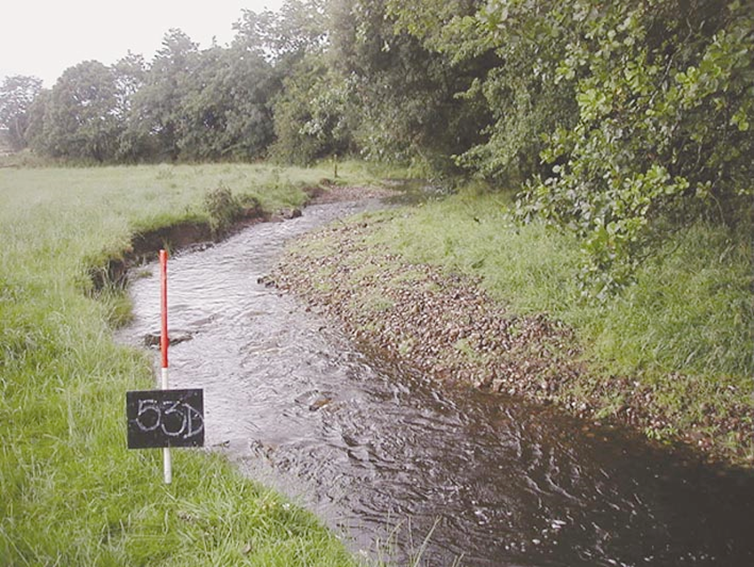
Examples of Vegetated Point Bars